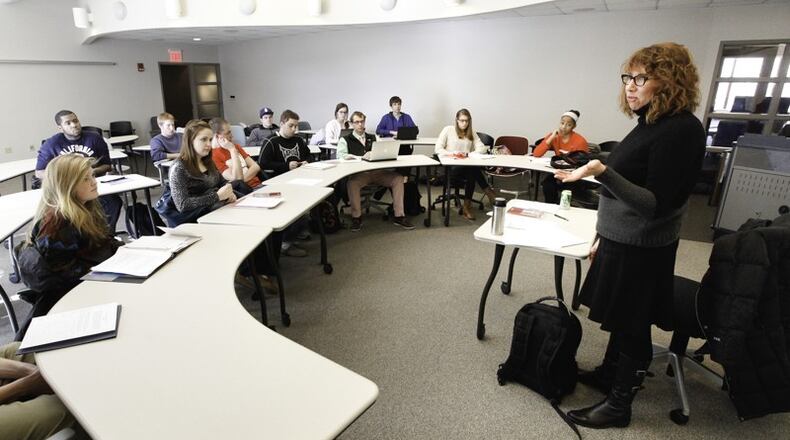Area schools are retooling their math offerings so students can take the courses that apply best to their situation and pass them on the first try.
RELATED: UD expects class of 2021 will be largest, most diverse in school’s history
Below are a few ways area colleges are changing the way math is being taught.
1. Aligning math classes with careers
It makes sense for an engineering student to take calculus and algebra but less so for an accounting major or liberal arts student.
Sinclair Community College took that concept and implemented it across all areas of study. Now, students take math courses that they are more likely to use in their chosen career fields, said Kathleen Cleary, associate provost for student completion at Sinclair.
RELATED: WSU interim president: ‘Our financial picture is grim’
Accounting students at Sinclair now take “business statistics” while automotive students also take a class more geared toward the job they’re training for. Clark State Community College in Springfield has take a similar approach, officials there said.
“We have taken a holistic approach and said ‘where does math fit into that curriculum,” said Amit Singh, provost and senior vice president of academic affairs at Clark State.
2. College math ‘boot camps’
Students who struggle at math often just forget how to use what they’ve learned.
Instead of making them repeat a class, Sinclair offers them a quick refresher course in the form of a math “boot camp.” The boot camps last about one week and cover information that students have already learned, Cleary said.
RELATED: Area college to start self-driving car program
The boot camps help students struggling in math to move on with remedial math classes sooner at Sinclair. Around 80 percent of students who participate in a boot camp, pass it and are able to skip a math remediation class that would normally last an entire term, Cleary said.
Colleges today are also offering better tests to gauge where a student’s math skills are. That means students are less likely to flunk or drop courses if they find they’re in over their heads.
3. Making sure it doesn’t weed out aspiring engineers
Math has historically “derailed students” in certain fields of study.
Wright State University sought to change that in 2004 in engineering. Rather than blasting students with calculus courses upfront, WSU restructured its engineering program by first offering a course that shows how math is applied to the engineering field.
RELATED: Ohio state wins presidential award for Fisher College of Business
The same calculus classes are still required, but students don’t just take them immediately, according to the university.
The change in math courses has proven effective at Wright State too. The change in curriculum increased engineering graduation rates at WSU from 24 percent to 56 percent, the college reported in 2015.
Area high schools and STEM focused schools have also adopted Wright State’s math model.
4. Different approaches to solving problems
Area colleges, such as Sinclair, are approaching math problems differently now.
Teachers are encouraging students to work in small groups to “reinforce deeper learning,” Cleary said.
RELATED: WSU program for students with Autism gains national attention
Sinclair is also trying to provide math problems that are more relatable. Instead of just requiring students to solve problems on a piece of paper, they’re using real world situations that certain math problems may arise during, Cleary said.
The “real world” problems help alleviate the perception that certain mathematical formulas aren’t used in everyday life, officials told the Dayton Daily News.
5. Tech helps students who struggle
Technology is being used by colleges to overcome hurdles students have faced in the past.
Whiles some students may be used to looking in the back of a book to for an answer to a problem, online programs are now being used so students can practice and get feedback and help on difficult problems, officials said.
RELATED: Kasich fills long-vacant trustee position at Wright State
Along with technological assistance, colleges are using technology to head off problems students may have in math classes.
Several area schools, including the University of Dayton and Wittenberg University use what officials and professors called “early alert systems.”
The systems allow an instructor to flag a student who may be struggling in class.
UD’s system goes a step further as well. It loops in tutors and advisers so a student, who may be struggling for a multitude of reasons, can get the assistance they need without putting in work to find out how to get that help, officials said.
About the Author
